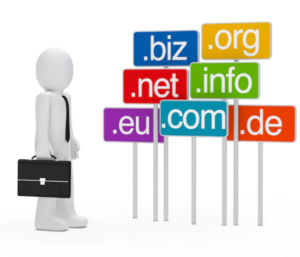Congratulations! You’ve decided to take the plunge and start a side hustle. Whether you’re looking to gain extra income, diversify your skillset, or simply grow a passion project into something bigger, starting an ecommerce business is an exciting endeavour that can help you achieve these goals. By following these steps, you’ll be well on your way to launching your own ecommerce business for less than $200.
Choose your niche

Before you start your side hustle, you need to choose a niche. The best choice is one that fits your skills and interests. Here are some tips for choosing the right niche:
- Identify a niche that is a good fit for your skills and interests. Are there any hobbies or skills that you already have? You could use these to start a business. For example, if you like photography and taking photos of animals, starting an ecommerce store selling pet accessories such as hundeleinen (dog leash) would be perfect! Try brainstorming ideas to find something that clicks with who YOU are as an individual.
- Research niches on Google Trends or other sites where it’s possible to see what people are searching for most often in your area (or even globally). This information can help guide which niches might work well for launching an ecommerce store based around them (and which ones may not).
Research suppliers and develop a supply chain.

Once you’ve chosen a product to sell, the next step is to find suppliers. It’s important to choose a unique product that will be in demand. Research what products are currently in high demand across all ecommerce platforms. Products like Sanitary Pads has an high demand among women. Do some quick Google searches for “most popular ecommerce products” or “best-selling items on Amazon” and take note of what comes up as the top hits.
When it comes to finding reliable suppliers, there are several factors you should consider:
- How long has this supplier been around? The longer they’ve been in business, the more likely they are to provide quality products and customer service at an affordable price.
- Are they local? This isn’t always possible; however, if you’re able to source your products from a nearby supplier (or even better—from your home!), this can save money on shipping costs and allow you greater flexibility when it comes time for delivery scheduling.
- What kind of inventory does their company have available? Some companies only deal with certain kinds of products (e.,g., electronics), whereas others offer pretty much anything under the sun!
Once you’ve chosen your suppliers, using inventory management software can help you keep track of stock levels, avoid overselling, and streamline your fulfillment process as your business grows.
Choose your business name

Your business name is one of the most important decisions you’ll make because it will communicate to customers what you do and who you are. You want a name that is easy to remember and spell because that will make it easier for people to find your products online.
You also want to ensure that no one else has already taken the name you have chosen for your business (or at least not someone who could potentially cause legal trouble). You don’t want another company to use your brand name when they start selling their products online!
Make sure that other companies aren’t using any domain names or trademarks associated with the name.
The next step is to make sure that you can actually trademark your brand name. You must apply with the United States Patent and Trademark Office (USPTO). This process can take several months, so start early if you want a say in what happens if someone else tries to use your brand name. And to ensure future processes like trademark renewal remain smooth and hassle-free.
Get a domain

Once you’ve chosen a name for your side business, it’s time to get a domain. You want one that’s easy to remember and spell. If people can’t remember or spell it when they’re looking at it in their browser, they won’t be able to tell friends about it.
You can get your domain in many different places, but I recommend registering through one of these registrars: GoDaddy or Namecheap. Another option is Hover, which has an easy-to-use interface that allows you to quickly purchase domains without having any technical knowledge whatsoever (though this comes with a price tag).
Finally, if none of these options appeal to you because they charge too much money, there are also cheaper alternatives.
Set up payment processing

Setting up payment processing is an important step in starting your online store. You will need to decide which payment processor is best for you, and each one has its own pros and cons. Some payment solutions also support credit card transactions and alternative payment methods for customers without traditional bank access.
PayPal
Pros: PayPal is a trusted payment processor with millions of users worldwide. You can also use it to accept credit card payments directly on your website and in-person transactions at events or pop-ups.
This may be a good option if you accept international orders because PayPal has offices in over 200 countries. This can help keep shipping costs low since there are no exchange rate fees involved like there would be when accepting credit cards directly from foreign customers (see more below). There are also no monthly fees associated with using PayPal’s services—just the cost of whatever transaction fee they charge per sale made through their platform (usually between 2% – 4%). For every payment transaction made through PayPal, a fee is charged, which can be calculated using a PayPal fee calculator.
However, it’s always best to have many payment options for your customers to get the best purchase experience. I, for one, have never preferred PayPal as my payment method for buying anything; I usually go for net payment or card payment. So, feel free to give as many options to your customers!
Plan your launch
- Choose a launch date. Launch your side hustle when you have time to dedicate to it. If you’re in school and your schedule is full, try launching on Sundays or during the summer break.
- Plan your launch strategy. What kind of customers do you want? Who are they? How can you reach out to them? Are there any influencers in the market that would benefit from reviewing your product or service before its official release (and therefore be inclined to share their opinions with their followers)? What’s one thing that could go wrong with this entire process? We’ll talk about all these things below!
- Prepare content for launch: You need to write blog posts about what makes your product unique and why customers should buy from you instead of Amazon or another online retailer like Walmart or Target. You’ll also want videos explaining how people can use your service or product and testimonials from happy customers who love what they bought from you because it helped them get through an illness, lose weight, become financially secure…whatever applies!
A side hustle can help you gain extra income and diversify your skillset.
You might be wondering why you should work on a side hustle in the first place. Here are a few reasons why:
- To make extra money. Many people turn to side hustles to supplement their incomes and gain a financial edge. If you’re looking for an alternative source of income, it’s possible that starting a side hustle can help you achieve that goal.
- To gain new skills. Side hustles are also useful in helping you develop additional skills or expertise outside of your main career path—which may be beneficial if you plan on switching jobs or fields in the future (or if your current job doesn’t offer enough learning opportunities).
Conclusion
As we’ve seen, starting an ecommerce business can be a rewarding side hustle. It can be difficult to start, but once you have your store up and running, it doesn’t take much to keep it going.
Of course, this only applies if you’re selling physical products—if you want to sell digital products like information or subscriptions, then different considerations come into play. However, with just a little bit of research and planning (as well as some patience), anyone can start their own business selling goods online!


